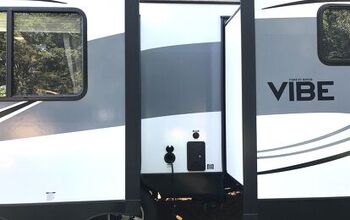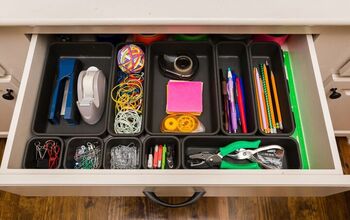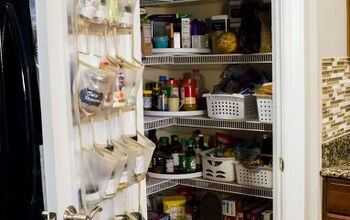How to Build an Emergency Fund in 7 Simple Steps

Figuring out how to build an emergency fund on a low income can be difficult, but it's not impossible. Not only is it a possibility, but it is an absolute necessity, especially for those with low incomes.
I'll give you seven actionable steps along with some tips and resources to help make starting your emergency fund a lot less daunting.
1. Open a no-fee, high-yield savings account
Most brick-and-mortar banks or banks with a physical branch location in your area offer, on average, a 0.45% annual percentage yield, which means that the bank is going to calculate less than half of a percent of what you have in the bank and then add that amount to your bank account each month.
Here's an example. Let's say you open a savings account with a deposit of $25, then put $25 in your account every month for 12 months. You would have saved $325, but the interest earned on that would only be about $ 0.73 over the course of a year.
On top of that, many banks charge a monthly fee of $5 to $10. So, that $ 325.73 that you thought you would have only ended up being about $265 because they took $60 out of fees. The point is to save money, not to lose it.
However, online savings accounts have higher APYs between 4 % and 5%. The Capital One 360 Savings Account offers a 4.3% APY. There's no minimum balance requirement, and there are no monthly fees. You don't even need any money to open the account.
So, on that same $25 per month plan, you can earn almost $7 in interest, giving you about $332, and you get to keep it all.
2. Create a plan for putting your money away
One great way is to start with the 52-Week Money Challenge. The principle behind it is that on the first week of the challenge, you save one dollar, and if you have that in cash, you can drop it into an emergency fund jar until you reach an amount you want to deposit into your bank account.
The following week, you save two dollars; the following week, three dollars, and so on. You increase the amount you're saving each week by just one dollar now. You might think that it doesn't sound like much, but when you do the math, by the end of the year, you will have saved $1,378.
Alternatively, you can begin your savings plan by deciding on a specific amount you want to have saved up in a year.
You divide that amount by 12, giving you a monthly savings goal. You should save up at least three months' expenses for your emergency fund.
3. Reduce your expenses
You need to have money to save. Sometimes, you need to dig a little to uncover it. So, if you haven't done so already, track your expenses for the next 30 days or look back through your bank account and see what you've been spending your money on and what things you can cut from your ongoing expenses.
Another way to reduce your expenses is to look into public assistance programs to see if you qualify for government assistance that can help lower or completely cover some of your essential expenses.
You can learn more about and apply for these and other government assistance programs for your area at USA.gov forward slash benefits.
4. Use a swap list
Now, as you look for ways to reduce your expenses, you can use a swap list; this is where you write down your regular expenses in one column, then research and write down some lower-cost alternatives in a second column.
One by one, you can start switching to the cheaper options, calculate the total cost savings, and transfer that amount into your emergency savings account each month.
5. Increase your Income
After going through and reducing your expenses, if you're still unable to see how you can put aside your goal amount each month, you can explore some simple and flexible ways to increase your income that don't require you to take on a second job.
First, you can declutter your home, sell some items you no longer need, and add money to your emergency fund. You can also start a flexible side hustle or some freelance work to help supplement your income.
6. Automate your savings
Once you've identified what money you'll use to build your emergency fund, you'll want to automate your savings process. If you tend to be forgetful or even a little overly pensive when saving, automation is an excellent idea for you.
It's like having a personal assistant for your savings account. Most banks can set up automated transfers from your checking account into your savings account. You can just set a standard weekly, bi-weekly, or monthly amount. And as long as there's money in your checking account, the transfer will go through.
Start with a small amount each week that you'll hardly even notice is gone, or you can set the amount higher just as long as you know it's an amount you can afford to have, leaving your checking account on the schedule you set. Then, be sure to include this savings amount in your monthly budget.
7. Set rules
This last step is to help ensure that the money you're putting away is still in the bank when you need it for an emergency, and that is to set rules for using the savings.
One of the things that keeps people from building a good emergency fund is that they keep dipping into it for things that don't qualify as an actual emergency.
Think about the things that have a cost that could go wrong and have a negative domino effect on other areas of your life.
For instance, a partial or complete loss of income will affect other areas of your life because you need money to buy food, pay for heat and electricity, et cetera. Other types of emergencies may include medical bills or vehicle repairs.
Whatever you decide, write those things down, and then before you use those emergency funds, ask yourself three questions. Is this situation unexpected? Is it necessary? And is it urgent, meaning you don't have time to save on this expense? If you answer yes to all three, you will likely need to use those emergency funds.
How to build an emergency fund
I hope you've learned how to build an emergency fund. It's never too late to start saving. Share your plan for saving in the comments below.
Next, check out my 10 Unexpected Grocery Hacks to Keep You on Budget.





















![101 Items to Get Rid of With No Regret [Free Declutter List]](https://cdn-fastly.thesimplifydaily.com/media/2022/08/30/8349390/101-items-to-get-rid-of-with-no-regret-free-declutter-list.jpg?size=350x220)



Comments
Join the conversation